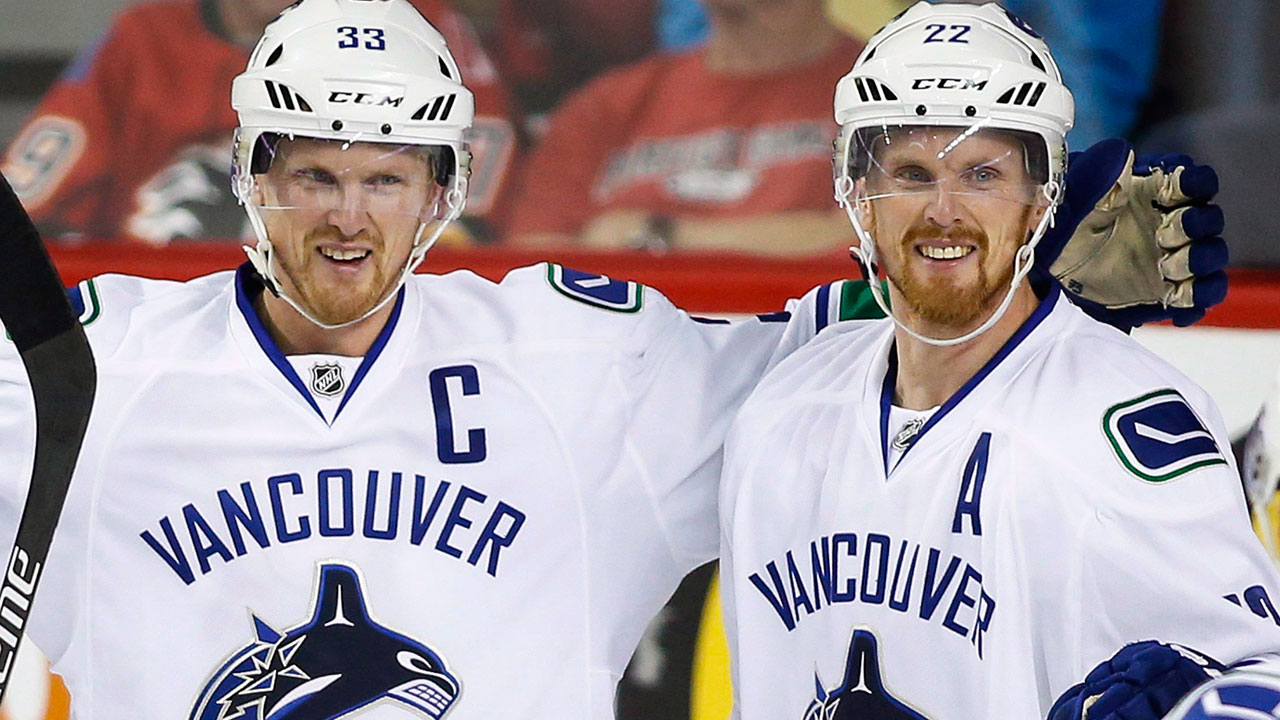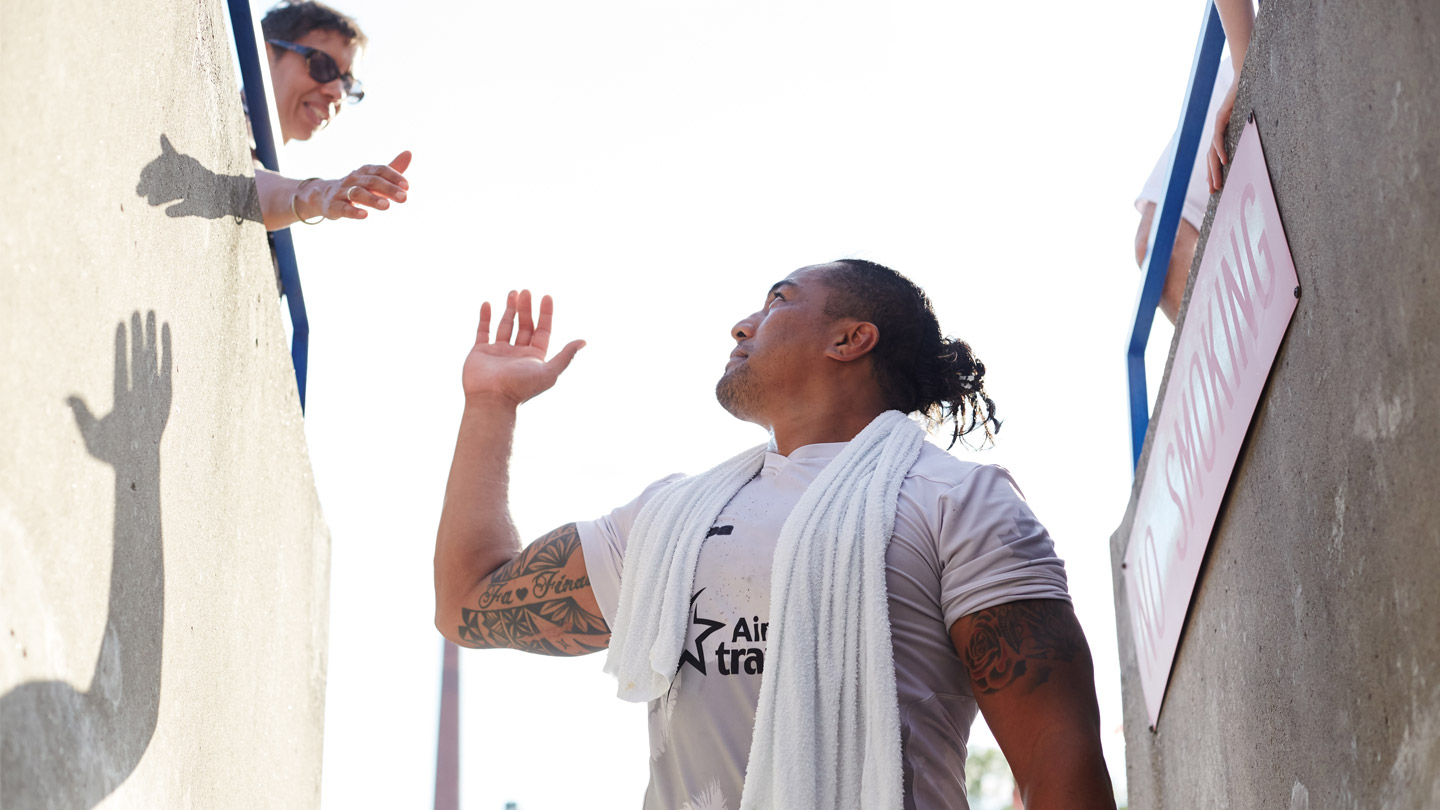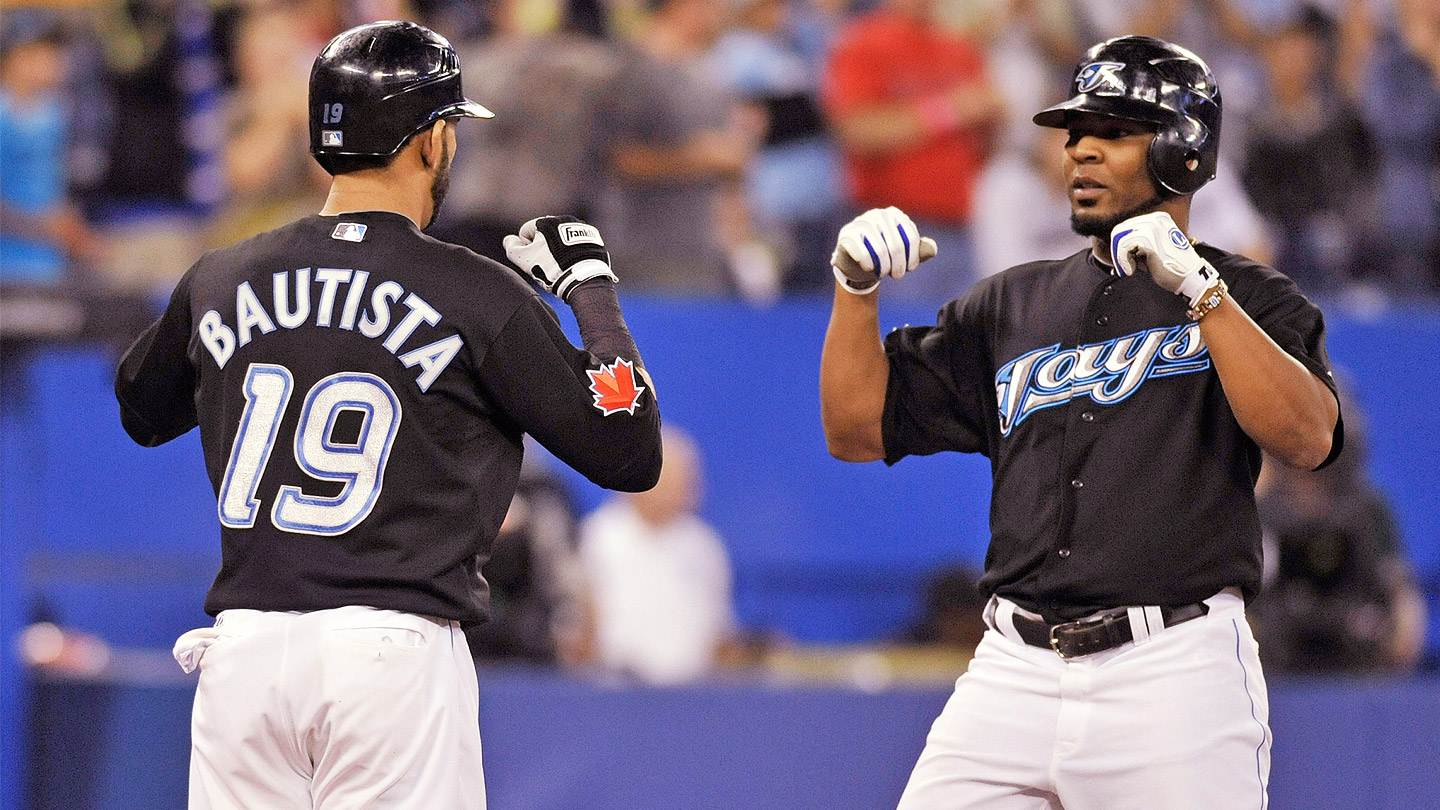Because Jonathan Drouin’s remarkable shift happened in the age of memes, it shines in many corners of the Internet. His 30 seconds of wizardry, though, could easily could have inspired a more musical art form. “Jonathan’s Quest,” “Hell-bent in Halifax,” or even “Doin’ the Drouin” could make a good title for an east coast folk song paying tribute to what the then-17-year-old displayed the February 2013 night he moved around the entire Acadie-Bathurst Titan team as if he had wings and they had roots.
First, No. 27 for the Halifax Mooseheads — standing nearly 200 feet from the opposing net —kicks the puck up to his stick, then skates it out of the defensive zone to start the power-play attack. Just as he crosses the Titan blue line, he takes a return feed from Stefan Fournier, pivots toward the right faceoff circle and feathers a short pass for Konrad Abeltshauser to one-time.
Acadie-Bathurst jump on the rebound, but fail to clear the zone. Another shot is kicked out by goalie Jacob Brennan to the right side, where Drouin collects it about eight feet from the half-wall. When Christophe Lalancette approaches, Drouin draws the puck toward his feet, jukes right, left, then right again and darts toward the net. After eluding defenceman Anthony Gingras, Drouin wires a forehand over the net on Brennan’s blocker side. The puck ricochets in the air and before it lands near the far boards, Drouin tracks it like a Gold Glove centre-fielder. With Lalancette in pursuit again, Drouin corrals the puck and slams on the brakes to throw a little space-creating hip check that knocks the Titan centre off-kilter. With a crack of daylight opened, Drouin spins to his forehand, drives the net and makes one more cut to his left. His last act is slipping a pass to Fournier, who easily taps the puck into the cage.
Whether you want to make a .GIF or get out your guitar, just know more material will be arriving soon. “We probably saw that 50 times,” Mooseheads GM Cam Russell says of Drouin’s man-on-fire shifts.
When the Montreal Canadiens and Tampa Bay Lightning hooked up for one of the off-season’s biggest trades — a one-for-one swap that sent Drouin north and drool-inducing defence prospect Mikhail Sergachev the other way — everybody knew the Habs were getting a 22-year-old with all kinds of raw ability. A true rink rat who often had to be ordered out of the arena as a teenager, Drouin faced his share of doubt and disappointment on the road to becoming an impact NHLer. The journey, somewhat infamously, took a little longer than Drouin would have preferred, but anyone who questions his commitment should share a beverage with the people he suited up for and beside on his way to The Show. Now, everything he went through should help him handle the preposterous expectations that go with being the Canadiens’ first Francophone scoring star in 20 years.
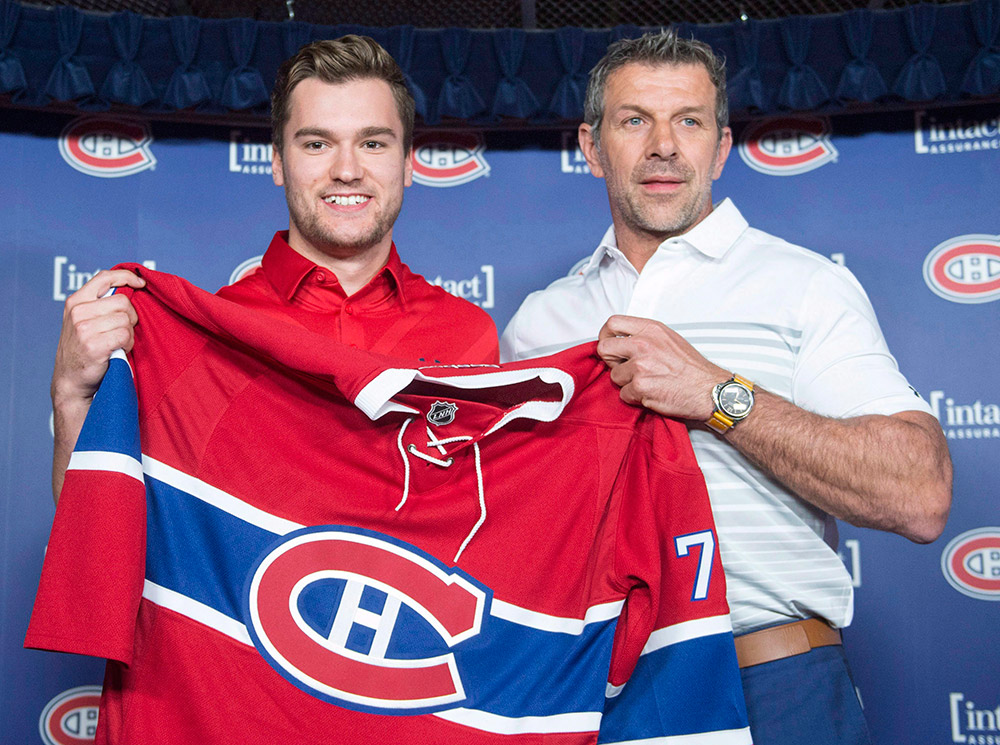
In 2004, the AAA Lac St. Louis Lions organization put together one of their first Jr. Lions teams, a spring squad for 1995-born players. Technical director Karl Svboda and GM Raz Saltarelli coached the team, which ended up encountering a nine-year-old who would eventually become a fixture in Lac St. Louis. “The story goes either they win 8-7 or lose 8-7, but there was one kid on the other side who scored all the goals for his team,” says Jon Goyens, coach of the Lions midget club.
After seeing what a wee Drouin could do, the Lions extended an invite to attend one of their skills camps. Soon, making the roughly 80-minute journey from his home in the Mont-Tremblant region to Lions headquarters in Montreal’s West Island became a regular part of Drouin’s minor hockey experience. Once there, he made the most of his time. “Let’s say he was already peewee age,” Goyens says. “He’d come on with the atoms and demo drills, but [he’s doing it at] 100 miles-per-hour. Then he goes on with his own age group and he already felt pushed to be the best, so he’d go 101 miles-per-hour. And then he’d be that little brother tugging at your jacket saying, ‘I want to go on.’ He goes on with the older guys and now he’s going 105 miles-per-hour because he wants to keep up.”

When the day’s drills were over, players of all ages would often scrimmage. The first step was picking teams, a task left to the senior skaters, like 2009 Canadiens first-rounder Louis Leblanc and Drouin’s future Tampa teammate, Alex Killorn. Despite being six years younger than Killorn and the 1989 crew, Drouin didn’t have to wait long to hear his name called. “Even then, you’d see a guy like ‘Killer’ [say, ‘Drouin is] on our team,’” Goyens recalls. “Just because he already had a knack for distributing the puck, playing well with others, but also being so ferociously competitive — even in pickup games.”
When Drouin was 15, he relocated to play full-time with the Lions midget program. Goyens was behind a bench stocked with talent, including Anthony Duclair — now a right winger with the Arizona Coyotes — and current Florida Panthers defenceman Mike Matheson. Drouin played both centre and wing that season, sometimes with Duclair and sometimes on a different line because Goyens found he would drive matchup-obsessed coaches mad by splitting the two up. In the dressing room, the Lions sat Drouin next to Matheson — the senior member of that combo by one year — so the latter could remind the always-eager former to chill out now and again.
Still, there was no tempering Drouin’s zeal for the game. He often took advantage of Goyens’s open-door policy to pour over the previous night’s NHL action. So it was no surprise when Drouin showed up one day declaring he wanted to use the Detroit Red Wings’ power play as a model for the Lions, casting himself in the Pavel Datsyuk role. Goyens was willing to listen and, up through the ranks, Drouin’s man-advantage approach — playing on the half-wall on his strong side so, if pressured, he could loop way up toward the blue-line on his forehand — was often similar to what he did in Lac St. Louis. “The hockey button was always on,” Goyens says. “Sometimes we had to say, ‘Hey, you can’t sleep here. We’re going to turn off the lights, you gotta go home. Hang out and do something else.’”
Moving on didn’t happen as quickly as expected after Drouin was selected second overall by Halifax in the 2011 QMJHL Draft. While a generous assessment would put Drouin at five-foot-seven and 150 pounds at the time, the Mooseheads very much anticipated he’d be in the opening-night lineup. Late in the off-season, though, Drouin opted to delay the move east and return to Lac St. Louis. However, after putting up more than two points per game for a couple months, Drouin made the major-junior jump and met one of his hockey soulmates.
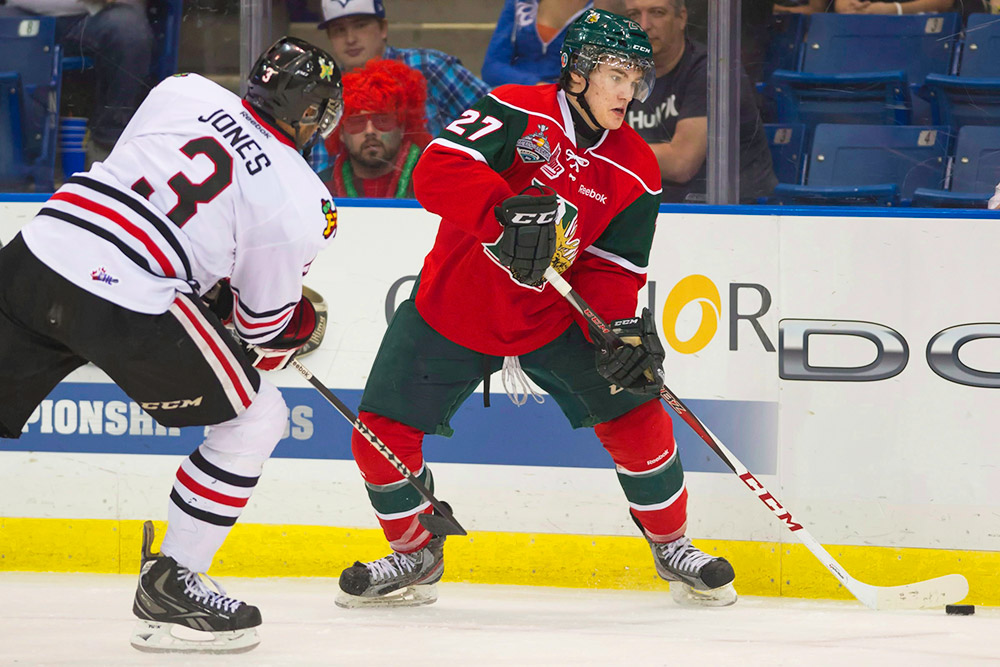
The only player who went ahead of Drouin in the ‘Q’ draft was Nathan MacKinnon, taken first overall by the Baie-Comeau Drakkar. Before the season started, however, the Nova Scotia boy was traded to Halifax for a haul of players and picks. Once Drouin came to town, he and MacKinnon struck an immediate connection. “They drove together, they hung out together, they played on the same line,” says Russell. “A lot of times [with] players of that calibre, you’ll get a lot of jealousy; there was [none]. I think they were smart enough to realize they were both fortunate to have each other. And they helped each other. Even though they were kids, they were very mature about it. They had a tremendous amount of respect for each other and were very good friends.”
For most of the year-and-a-half that Drouin played left wing beside centre MacKinnon, the right winger on the trio was Martin Frk. The Czech says it didn’t take him long to realize Drouin’s hockey I.Q. was off the charts. “Sometimes he surprised me with how he can pass the puck, or dangle three guys and then give you the puck [for] an open net,” Frk says.
Away from the rink, Frk took a little longer to get a read on Drouin. He jokes that, for a while, he thought Drouin was living in his own world and everyone else was just passing through it. But as the two got closer, riding to games and practices together, Frk got a feel for Drouin’s sense of humour, usually while the latter downed a Coke on the way to the rink. From a food standpoint, road trips to Quebec were always cause for excitement. “He loved his poutine,” says Frk. “He was a great guy. I would say a different person on the ice and a little bit different off, [too].”

Drouin’s exceptional ability earned national attention during a 2012–13 campaign that saw him represent Canada at the IIHF World Junior Championships, earn MVP honours in both the ‘Q’ regular season and playoffs, get named Canadian Hockey League Player of the Year— not a common occurrence for juniors in their first year of NHL draft eligibility — and register five assists in Halifax’s 6-4 win over the Portland Winterhawks in the Memorial Cup final. Thanks to that body of work, most people assumed the third-overall pick in the 2013 NHL Draft would start his pro career that October with Tampa Bay and never look back. When that didn’t happen, it stung the 18-year-old, who watched pal MacKinnon — among others from his draft class — crack their respective NHL clubs. “That really hurt him,” says Russell. “But the incredible thing was, by Christmas, he became a great leader for us. He could [have gone] one way or the other and, fortunately for us, he became a great leader.”
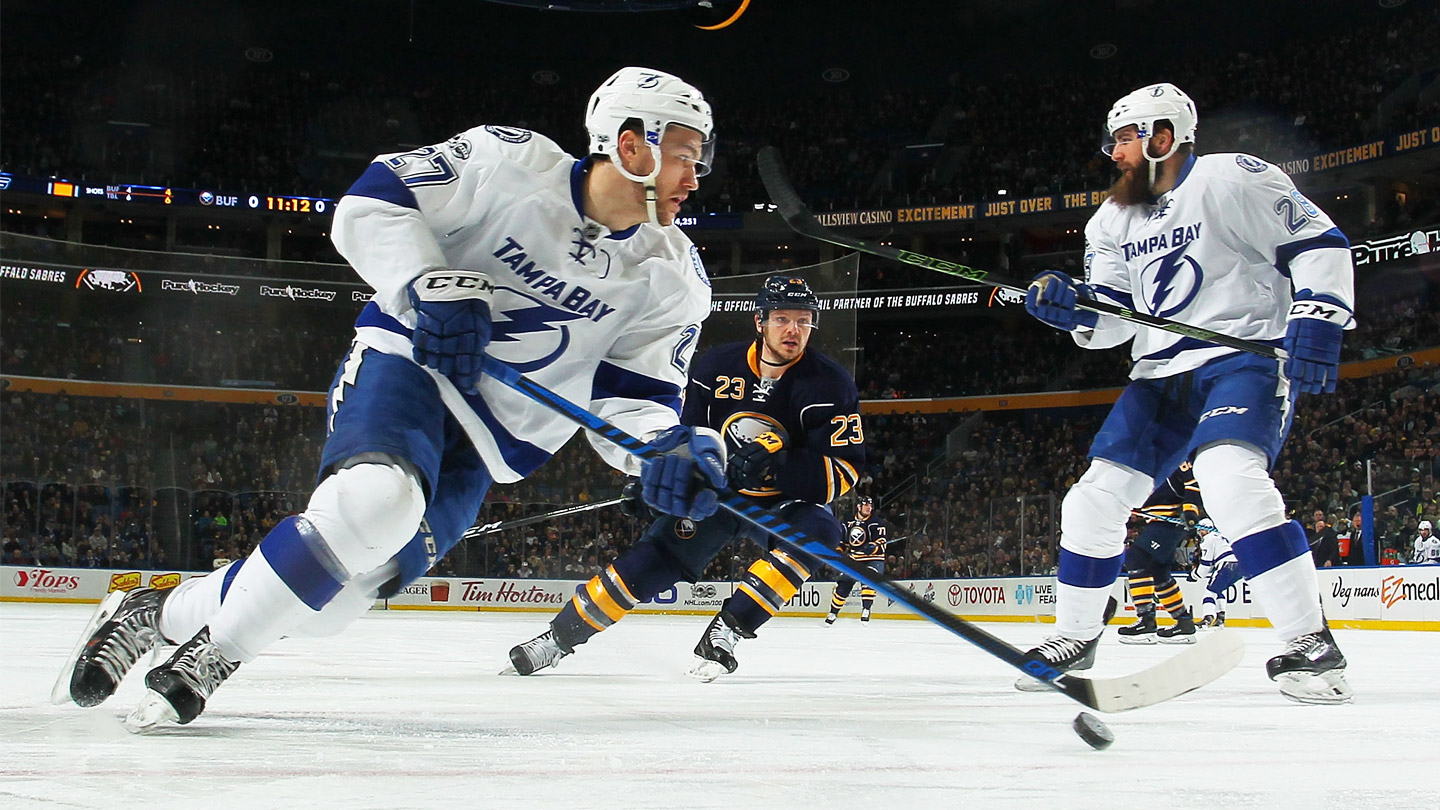
That ability to refocus is likely something that came up when NHL suits started calling Russell a couple years later. During the 2015–16 season, Drouin — unhappy with the fact he’d yet to secure a regular spot in the Tampa Bay lineup — went public with his request to be traded by the Bolts. Given the team was a quality outfit run by universally respected GM Steve Yzerman, it was easy to paint Drouin as a petulant youngster. Russell understood why people were coming to him for the goods and still recalls what he told them at the time: “My opinion remains the same on Jonathan: You’re getting a guy who one day will lead your team to a championship.”
That’s the obvious hope in title-starved Montreal, where part of the equation is figuring out whether Drouin will start his Habs tenure on the wing or in the middle. He played centre during his final season with the Mooseheads and Russell has no doubt he’d excel there if the Canadiens go down that path. “You could put him on defence and he’d still look like a million bucks,” Russell says.
Drouin probably didn’t even have time to contemplate where he’ll line up in the moments immediately following the trade. Goyens was in touch with him briefly on that whirlwind June day, which saw Drouin hit the brakes on his way to the golf course, turn around and head downtown to the Bell Centre for a press conference. “He was ecstatic,” Goyens says.
Less than a week later, Goyens and some other members of the Lions organization had a proper catchup with Drouin when they all went out for a steak. The coach looked hard at his old player and asked if he was really ready for everything his new life will entail. Drouin admitted the 24/7 attention isn’t something he’ll love, but he has no fears about it impacting his game. Goyens has a similar view.
“You don’t bet against Drouin,” he says. “Can he be like a moody player, this and that? Yeah, sure. But a lot of it is just because he has high expectations of himself and he hates to lose more than any other player I’ve had, bar none.”
Sounds like he’ll blend into his new hockey-mad surroundings just fine.


